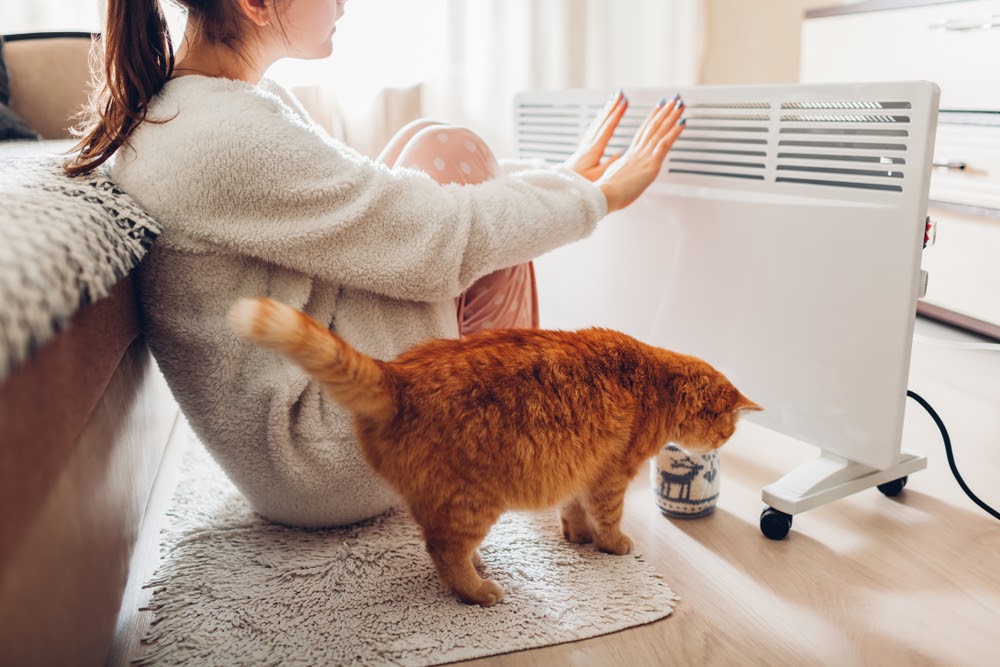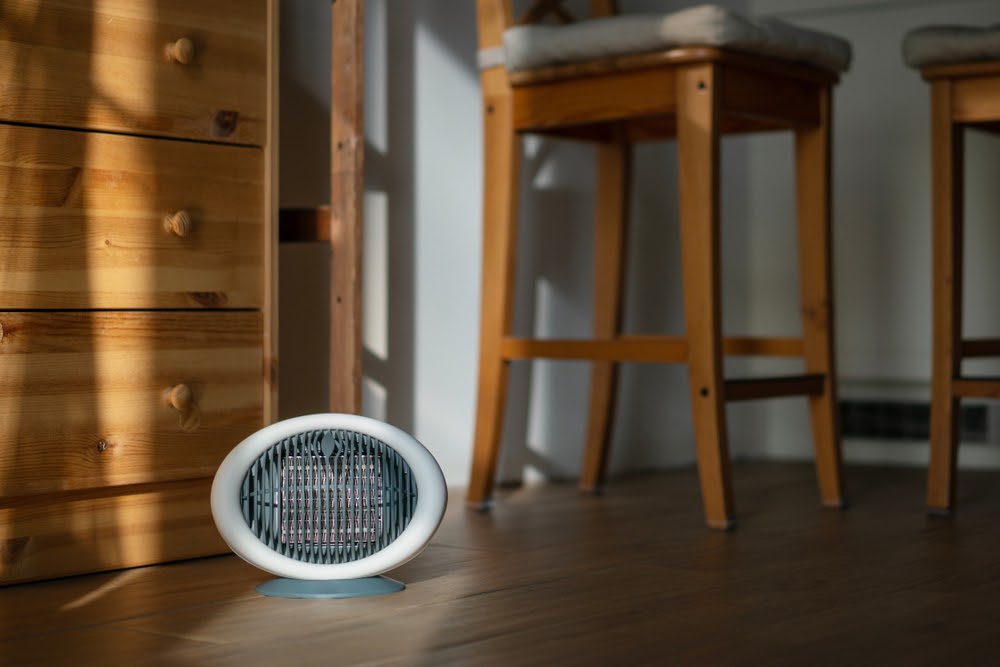Types of Heating Systems for Home Heating

As temperatures drop and the colder months settle in, you may find yourself cranking the thermostat to keep your home cozy. However, with your warmth comes a hefty home heating bill you’ll have to foot each month. According to the U.S. Department of Energy, heating is the most expensive home maintenance system. It’s worth noting that not all heating systems have the same bearing on your comfort levels, wallet, or the environment.
Whether you’re curious to know more about your home heating system or you’re in the market for a new, upgraded model, we’re here to supply an array of knowledge about the many types of heating systems available.
Types of heating distribution systems
Before diving into the different offerings, let’s break down the basic components of home heating and how they work. Each heating system is comprised of three primary parts:
- Heat source: This could be a furnace, boiler, or heat pump. The heat source supplies warm air or water for heating the home.
- Heat distribution system: This is the system responsible for moving the warm air, steam, or hot water throughout the home.
- Control system: This is usually a thermostat that controls the temperature and heat distribution.
Boilers
A boiler is a closed pressure vessel that boils water and turns it into steam. The steam is then distributed through pipes to your home’s radiators, floor systems or coils. Boilers are extremely common in U.S. households, making them one of the most popular types of heating systems in America. These systems offer lifespans ranging from 15-30 years with proper maintenance.
Pros:
- Better air quality: Compared to forced air systems, boiler heating systems provide cleaner in-home air quality. Without any blustery forced air to kick up dust, you don’t have to worry about your boiler causing any sneezing or coughing.
- Silence: Boiler systems operate with virtually no sound at all, so you never have to worry about blowing or sudden mechanical noises.
Cons:
- Price: Although boilers are the most cost-effective heating systems, they are more expensive upfront.
- Leaking: Because boiler systems use water, there is always a chance that the boiler itself or the pipes spring a leak (often due to corrosion).
Furnaces
Furnaces are another popular type of heating system that typically run off gas or electricity. Also called forced air, these systems supply your home with heat by warming air and dispersing it t via air ducts.
Pros:
- Lifespan: The average furnace can provide between 20-30 years of smooth operation with proper maintenance.
- Minimal maintenance: Generally speaking, furnaces are only used during cooler months, which means they don’t typically require year-round maintenance.
Cons:
- Price: Electric furnaces can lead to costly monthly electric bills.
- Risk: While rare, due to the nature of their design, gas furnaces can pose serious risks to your household, such as fires, explosions, and carbon monoxide poisoning.
Active solar heating
Active solar heating systems use solar energy from the sun to warm liquid or air for home heating. These systems require rooftop solar panels. Expected upkeep and maintenance for solar heating systems is far lower than other home heating systems. Installing an active solar heating system can also increase the resale value of your home.
Pros:
- Tax incentives: There are a myriad of different tax credits, rebates, and other incentives on both federal and local levels. These incentives can be used to help cover or offset solar panel installation costs.
- Reduced carbon footprint: Solar power is completely self-sufficient, clean, and renewable.
Cons:
- High installation expenses: Active solar heating systems can be expensive to install in your home — however with programs like PACE financing, footing the bill for green upgrades is made simple.
- Low-grade energy: If you’re planning to use heat energy as electric energy, expect lower grade levels.
Heat pumps
Heat pumps work by pulling heat from the air outside of your home and transferring it to refrigeration coolant. The heated air is then distributed to the rest of the home. Heat pumps typically feature life spans up to 15 years.
Pros:
- Efficiency: Heat pump systems rely on electricity for power rather than for the generation of heat which yields a higher efficiency rate than other home heating systems.
- Cooling element: Heat pumps are capable of reversing the heating process and supplying your home with cool air for the warmer months.
Cons:
- Difficult installation: Significant research is required for proper installation as there are many geological elements that require consideration.
- Price: Heat pumps come with costly upfront expenses, however, with that comes long-term savings on energy bills and reduced carbon emissions.
Electric heating
Electric heating, or electric resistance heating, is a process in which electrical energy is converted to heat energy. These home heating systems boast efficiency rates between 95–100% and lifespans of 20+ years.
Pros:
- Easy installation: Electric heating systems do not require vents to connect the indoors and outdoors, making installation much simpler. The installation process is also quick and causes minimal disruption.
- Maintenance: The odds of an electric home heating system malfunctioning are extremely slim and in the event of a break, the consequences are not as grave as those of a gas furnace.
Cons:
- Slower heating: An electric furnace takes time to power up and warm the air for your home, resulting in slower heating rates.
- Operating costs: Since electricity costs more than gas, an electric heater is typically more expensive to run and maintain over time.

Portable heaters
If your main heating system is not working properly or is too costly to operate, portable heaters might be an inexpensive alternative. When you only need to heat one room, portable heaters can be especially cost-effective.
Some portable heaters are powered by convection, which recycles air in a room, whereas others utilize radiant heating which directly heats objects and people within their immediate line of sight.
Pros:
- Convenience: Easily place your portable heater in any room that needs a temperature boost.
- Price: Brand new portable space heaters can cost as low as $20 and serve your home well.
Cons:
- Safety: With any portable heating system, the risk for fires or burns still exists. Portable heaters must be placed away a safe distance from anything flammable, like curtains, extremities, linen, and furniture.
- Heating capacity: Depending on the size of the portable heater, you may find that smaller models aren’t capable of heating up an entire room.
Types of distribution systems for home heating systems
Forced air system
Forced air heating systems employ a powerful blower fan to pull in air from your home, propel it over a heat exchange, and finally distribute it to various rooms in the house via ductwork. Forced air systems are the most common home heating systems in modern North America.
Steam radiant
Steam radiant heating systems require a boiler to turn water into steam. The steam then circulates through pipes to radiators or convectors and warms the interior of the household. As the steam eventually cools, it condenses back into water and returns to the boiler to be heated again and repeat the cycle.
Radiant heating
Radiant heating systems transmit heat directly to the floor or panels of your home’s wall or ceiling. These systems are mainly dependent on radiant heat transfer. Radiant heating systems tend to be more efficient than forced-air systems as they eliminate duct losses and dust kick-up.
Hot water baseboard
Hot water baseboard systems are another type of modern radiant heat. An advanced heating method, this system is also known as a hydronic system. By using a centralized boiler to heat water that then circulates through a system of water pipes to low-profile baseboard heating units, hot water baseboard heating radiates heat into the room via thin metal fins.
This method of heating increases the ambient temperature of the room but lowers the temperature of the water in the baseboards. To complete the full circuit, the cooled water returns to the boiler through the return pipes.
Electric baseboard
Electric baseboard heaters essentially function as zone heaters and are controlled by thermostats. These heaters are typically installed underneath windows, where the heater’s rising warm air counteracts falling cool air from the window’s glass.
How to choose the right home heating system for you
Choosing the right heating system that suits your needs and complements your home can be overwhelming, but you can have a stress-free experience when you know what to take into account. Some of the factors to consider are:
- Cost to install
- Cost to run
- Life expectancy
- Environmental impact and consequences
- Reliability
With your heating needs in mind, you’ll be able to narrow down your search to a selection of options that will serve your household well and keep you cozy all winter long.




